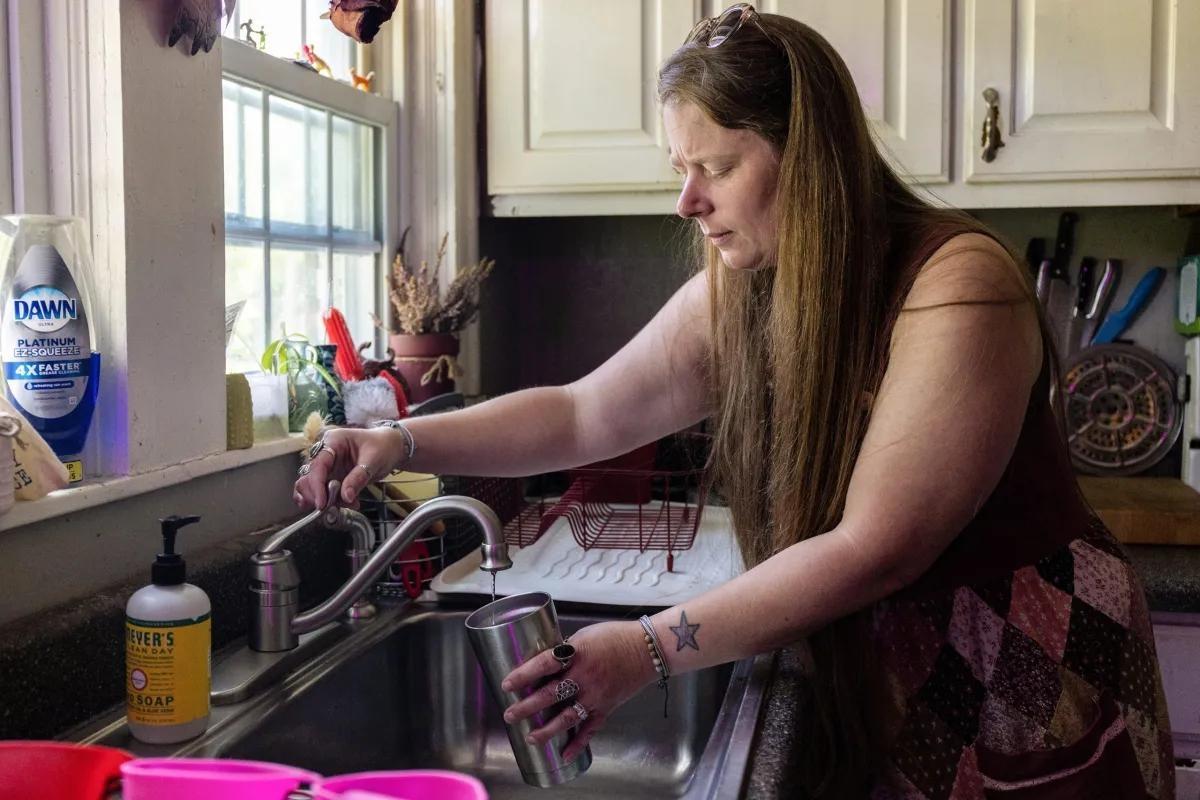Consumer Reports has identified four water filters, including two pitchers and two under-sink models, that can help consumers filter out forever chemicals.
Some systems, such as reverse osmosis, can cost thousands, which is more than many Mississippians can afford. Even if they can, they might not be able to install such a system, because a third of Mississippians, like the Dotsons, rent their homes.
Crystal hopes the family can convince their landlord to install a reverse osmosis system, she said. “We worry about our children. We want to help them.”
Kelly Hunter Foster, senior attorney for the Waterkeeper Alliance, an environmental advocacy organization, said a more ideal solution would be for states to prohibit the release of PFAS, “rather than try to filter them out on the back end. The public should not have to pay for the pollution that these companies create.”
Mississippi is one of at least 18 states that have sued PFAS manufacturers and distributors, saying they knew “these compounds were toxic” and sold them anyway. The lawsuit, filed in federal court, demands that they pay “to investigate, assess, remediate, monitor, and restore the sites in Mississippi” where PFAS were used. Minnesota settled with one manufacturer, 3M, for $850 million.
Mississippi’s lawsuit identifies these known sites as contaminated: Gulfport Combat Readiness Training Center, Gulfport Naval Construction Battalion Center, Keesler Air Force Base, Columbus Air Force Base, Key Field Air National Guard Base, Jackson Air National Guard Base and Naval Air Station Meridian.
Military bases typically use firefighting foam, which has historically contained PFAs. These forever chemicals can be found in many other places, including fast-food packaging. In a 2022 study, Consumer Reports found PFAS in packaging from every retailer tested.
“Additional investigation and testing will undoubtedly uncover further contamination across the State,” the lawsuit says.
In January 2022, Emmy Morrison and her husband bought their downtown Hattiesburg home.
They found water filters on the faucets because of the lead. She was stunned to find out the bigger problem was PFAS.
Thousands of these forever chemicals exist, but regulators test for only a handful of them.
“Unless you are controlling and testing for all those different types of PFAS, you’re missing major amounts of risk,” said Foster of the Waterkeeper Alliance. “When we look at samples we see some of the highest levels in the rare lesser types of PFAS.”
A decade ago, EPA officials tested for six forever chemicals in 80 of Mississippi’s drinking water systems. This year, they are testing for 29 chemicals in 239 water systems and will release the results here.
Consumer Reports tested for 43 chemicals. That is far short of the thousands of PFAS that exist.
Rather than attack PFAS as a class, the regulatory system in America “is stuck on a toxic treadmill,” said Reade of the National Resource Defense Council. “The EPA has taken a small step in the right direction to get off that treadmill.”
In contrast, the European Union is moving toward phasing out all PFAS, she said. “They’re attacking PFAS at their source. Here, we’re still approving new PFAS.”
The National Resource Defense Council is pushing to reduce “people’s exposure to PFAS,” she said. “We can’t make it zero, but we can definitely reduce their exposure and, therefore, their risk. We need to stop adding to the problem in the first place.”
In Morrison’s home, Consumer Reports found a total of 43.6 PFAS, which is four times more than Consumer Reports’ recommendation of 10.
That concerns the 62-year-old Morrison. “I’m glad I’m not young,” she said.
Four decades ago, Fahey House and other Sierra Club members fought to make sure DuPont, which produced PFAS and stored dioxins and other hazardous materials at its plant in DeLisle, didn’t send any waste toward Bay St. Louis.
At least 2,000 people have filed litigation against DuPont, alleging that pollution from the plant has harmed their health, and juries have awarded millions in damages.
In 2005, the EPA uncovered evidence that DuPont had concealed the toxic effects of PFOA, and the company paid a $10.25 million fine, which the agency at the time called the largest environmental administrative penalty in its history.
In 1981, DuPont spotted PFOA in blood samples from pregnant workers in its plant in Washington, West Virginia, and at least one woman had transferred the chemical to her baby, according to the settlement. A decade later, the company learned that the forever chemical was in the public water supply.
DuPont said nothing, and in 2001, the EPA learned of the problem from an attorney working on class-action litigation on behalf of citizens in Ohio and West Virginia who had been affected by the chemical, according to the settlement.
As for House, testing showed total PFAS in her drinking water to be 20.7.
“We’ve got junk in the water,” she said. “I can’t say I’m surprised.”
Before the 74-year-old moved back to her hometown eight years ago, she had a reverse osmosis system for her drinking water in Tampa. Now back on the Mississippi Gulf Coast, she has no such system.
These days, she uses a refrigerator filter on the tap water she drinks. Now she wonders what she needs to do to be safe. “Do I need to bring Perrier from France?” she asked.
She is researching the matter, she said. “I didn’t come this far in life to want to come down with liver cancer.”






